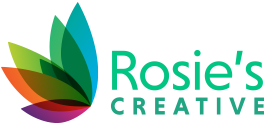
Looking Good! Tips for Communicating Your Aesthetic
 Evoking emotion, inspiring responses, and communicating intention all come from the proper use of aesthetics. The right aesthetic principles allow you to express your business identity and personality visually. The Oxford dictionary defines aesthetics as, “a set of principles concerned with the nature and appreciation of beauty, especially in art.” This forms the core of design and art theory, and allows us to express ideas in shapes and colors.
Evoking emotion, inspiring responses, and communicating intention all come from the proper use of aesthetics. The right aesthetic principles allow you to express your business identity and personality visually. The Oxford dictionary defines aesthetics as, “a set of principles concerned with the nature and appreciation of beauty, especially in art.” This forms the core of design and art theory, and allows us to express ideas in shapes and colors.
There is a lot that goes into the expression of your business identity through a dedicated set of design decisions. Anything that represents your business is a part of this, including:
- The company logo, symbolizing the values, identity and brand
- Company stationery for physical communications, forms and some records
- Physical marketing materials such as flyers and brochures
- Packaging for all products shipped by the company, and all products made by the company
- Apparel design for a uniform representation among employees, or merchandising for customers
- Signage for street facing facades, some internal walls, and fleet vehicles
- Other means communication, such as audio, smell, touch, etc., for applicable products and services
All of that means choosing the right attributes for every aspect of identity and branding, including color palette, font family and type, shape, complexity and mood. A bakery may depend on warm, comfortable colors that evoke a sense of comfort and flavor, a more decorative script font. Conversely, a laboratory would probably prefer stark lines and hard shapes, with cooler colors and a clean linear font from the sans-serif family.
Advertising and marketing are only part of an aesthetic. Showing not just products, but objects that contextualize the products, gives a better shape of what a business provides. Showing food on its own is good, but showing the food with happy faces, in a comfortable room, plants the idea of a whole experience that includes the food. Showing a car or engine implies service to a car, but showing a mechanic working on it demonstrates know-how and work ethic.
Stimulating other senses is important as well. Different musical keys, for example, provide emotional input. C major has a light tone that conjures innocence and brightness, whereas D major is victorious and inspirational, and F sharp minor projects a lament. Scent is especially important – food scents that stimulate the appetite, perfumes to evoke desire, and cleaners for a sense of cleanliness.
With clear and complementary aesthetics on your side, you can project the exact image and identity needed to show up with strength and clarity on the market. Rosie’s Creative specializes in translating expertise and values into successful market presence. Contact us today to see how we can create the designs needed to hone your aesthetics and catapult your business into public awareness. Remember – your first consult is always free!
